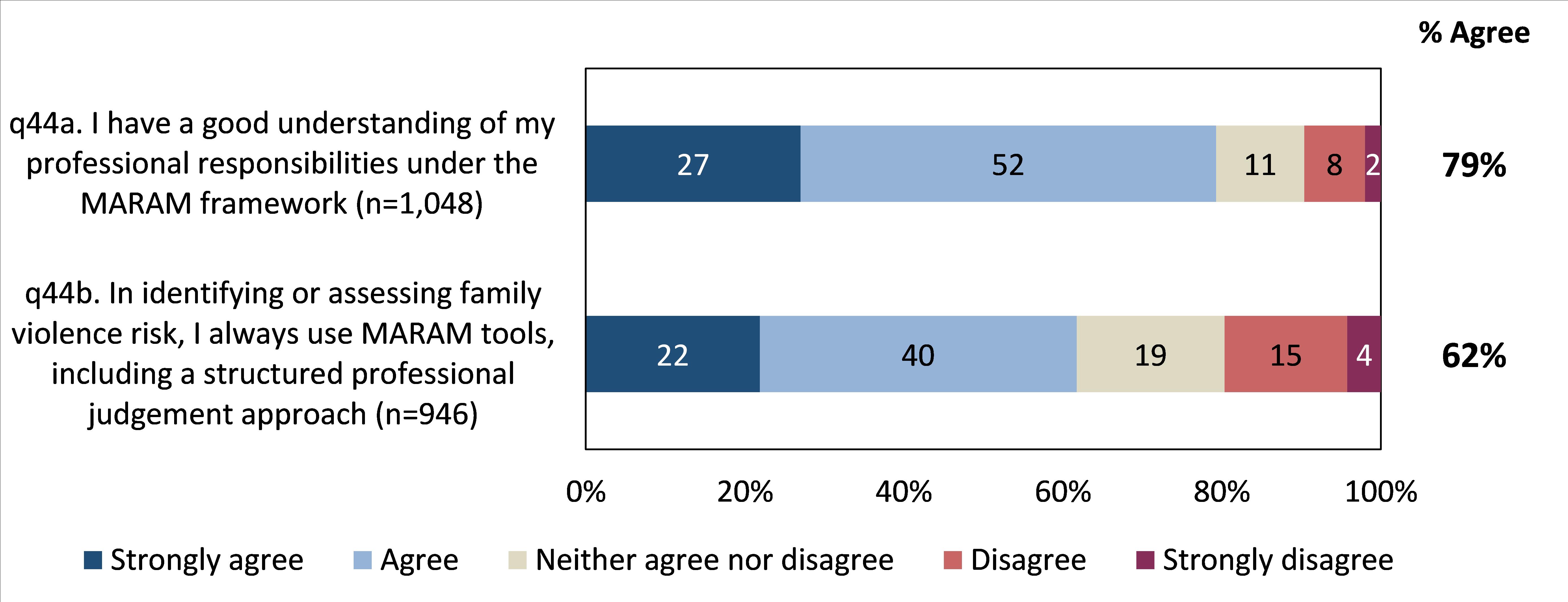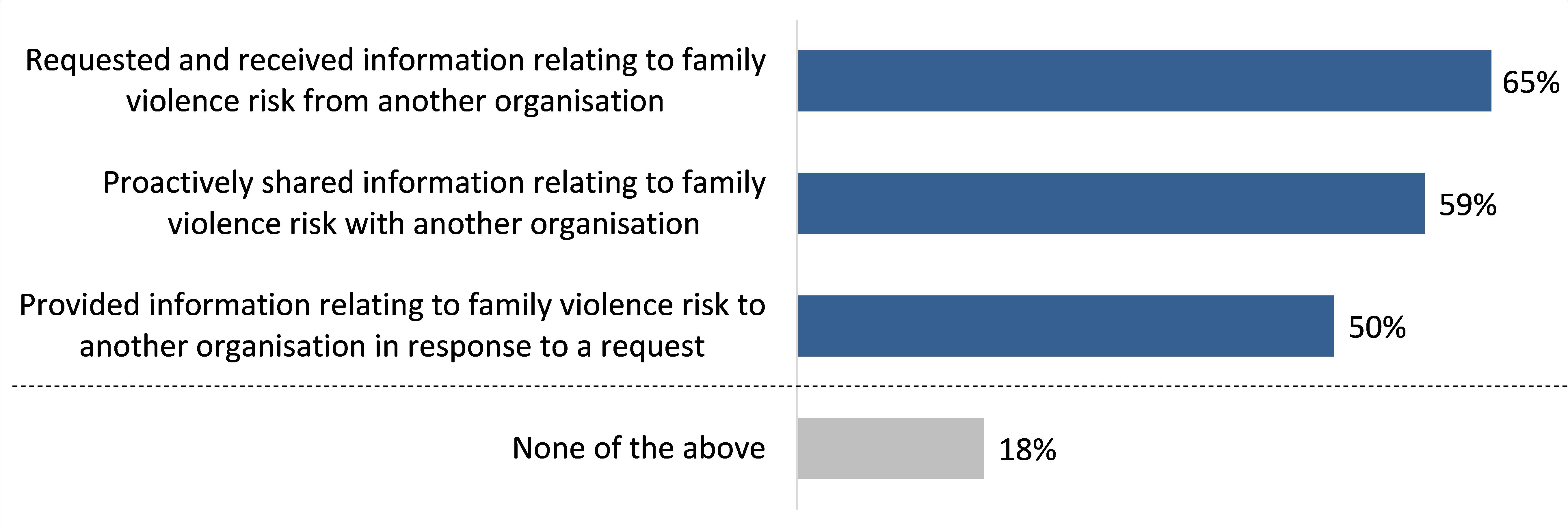The family violence Multi-Agency Risk Assessment and Management (MARAM) framework provides guidance to organisations prescribed under regulations that have responsibilities in assessing and managing family violence risk.1 The framework is designed to ensure services are effectively identifying, assessing and managing family violence risk. A range of organisations were prescribed under MARAM in September 2018. Further information about the scope and timeline of MARAM reforms.
92% of respondents within the specialist family violence response workforce indicated that they had heard of the MARAM framework2; and of these,
81% understood that the organisation that they currently worked for was prescribed to align with the MARAM framework.3
Of those who worked for organisations prescribed to align with the MARAM framework, understanding of one’s professional responsibilities under the framework was widespread (79% – see Figure 11). Additionally, a majority (62%) consistently used MARAM tools (including a structured professional judgement approach) in identifying or assessing family violence risk.
81% of respondents within the specialist family violence response workforce felt that they had a ‘good’ or ‘very good’ understanding of their responsibilities to share information relating to family violence risk under relevant Information Sharing Schemes and privacy law.4
Reported understanding of information sharing responsibilities did not vary substantially across most demographic cohorts, but did differ slightly by organisation type (see Table 4 for details).
Figure 12 shows that conduct of information sharing activities under the Family Violence Information Sharing Scheme (FVISS) was moderate, with:
- the most common activity undertaken in the past year being the request and receipt of information relating to family violence risk from another organisation (65%); and
- just under one-in-five indicating that they had not undertaken any information sharing activities under the FVISS in the past year (18%).
Footnotes
- Family Violence Multi-Agency Risk Assessment and Management
- Q42. Before today, had you heard of the Multi-Agency Risk Assessment and Management (MARAM) framework? (n=1,482)
- Q43. Is the organisation that you work for in your current role prescribed to align with the Multi-Agency Risk Assessment and Management (MARAM) framework? (n=1,356)
- Q46. Please rate your understanding of your responsibilities to share information relating to family violence risk under the Family Violence Information Sharing Scheme (FVISS), Child Information Sharing Scheme (CISS) and relevant privacy law. (n=1,343)
- FVISS enables prescribed Information Sharing Entities (ISEs) to share information with each other to assess and manage of family violence risk to children and adults. Some ISEs are prescribed for specific services, rather than the entire organisation. Further detail on the FVISS is available at www.vic.gov.au/about-information-sharing-schemes-and-risk-management-fr…
- Those working in child protection also reported a high level of information sharing activity (90%), however this result should be treated with caution due to the low sample size (n=10).
Updated

